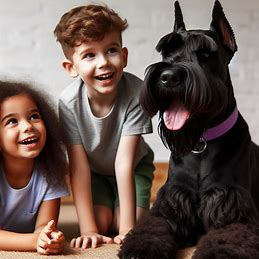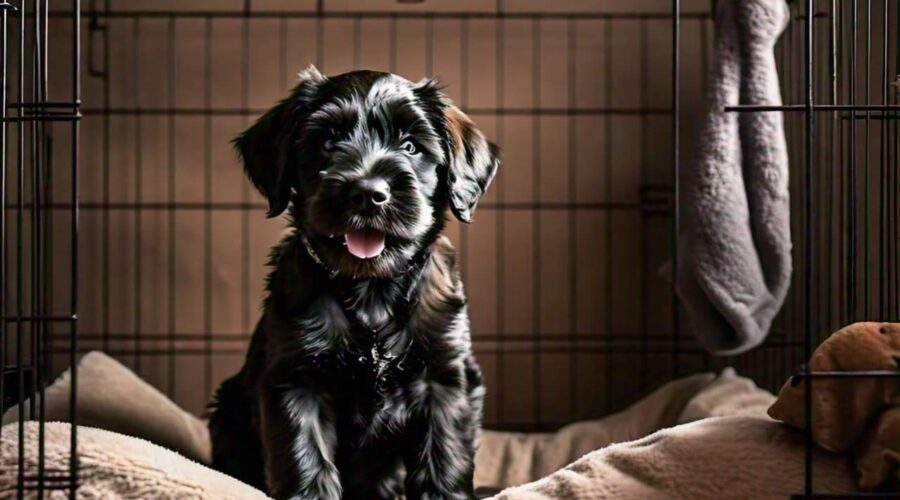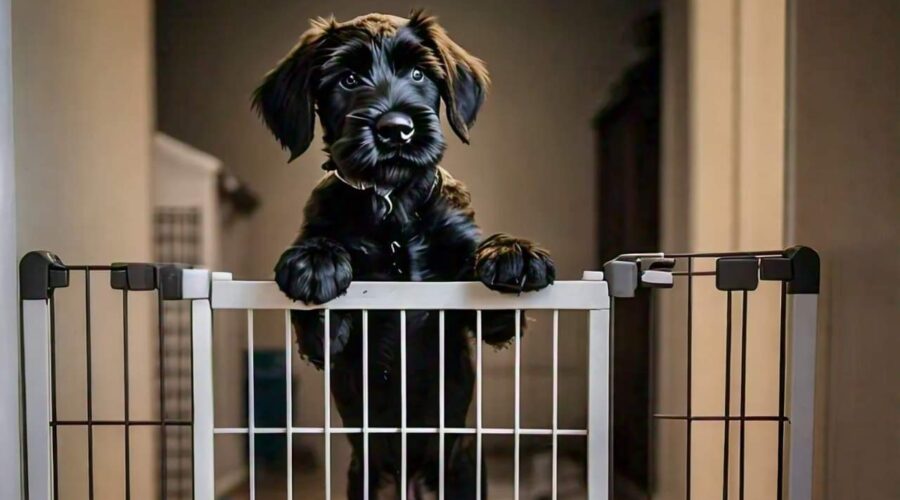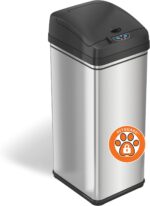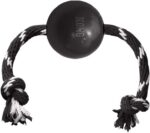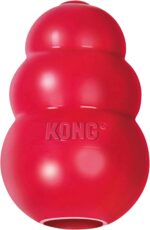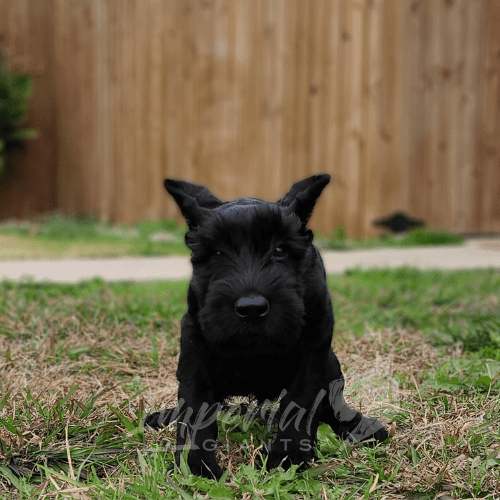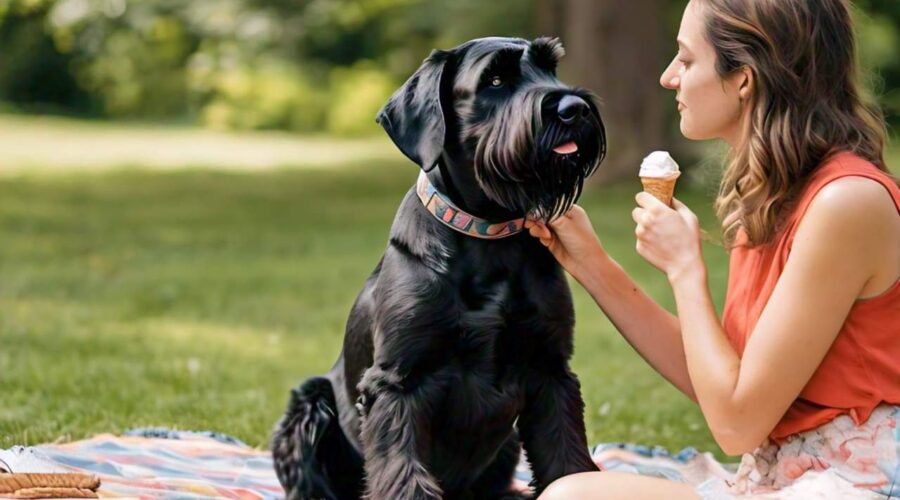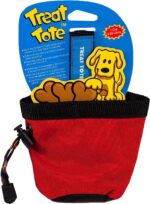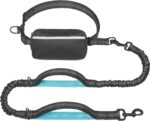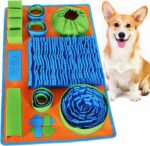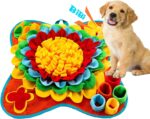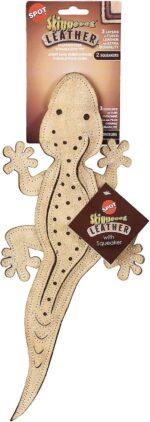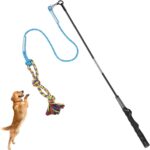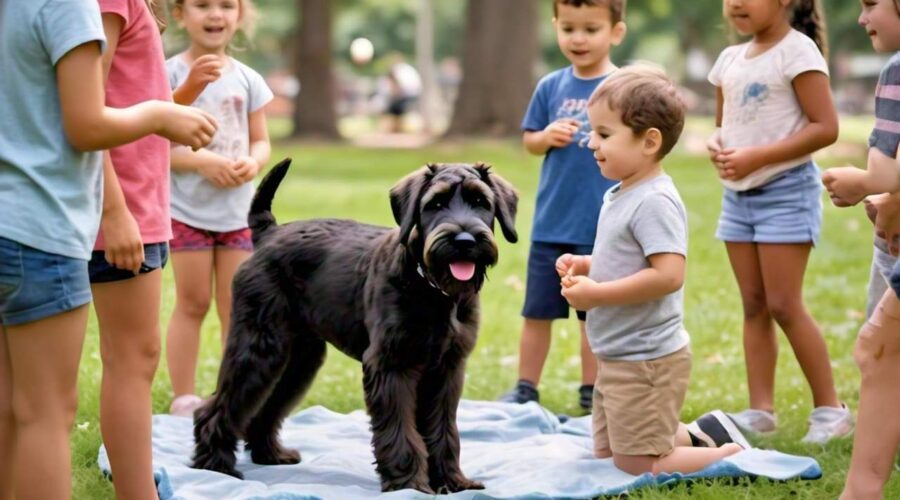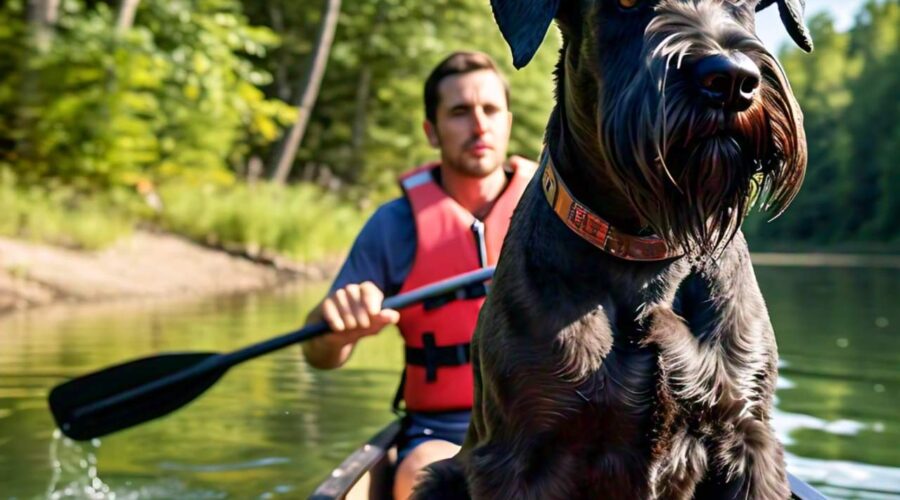The Truth About Giant Schnauzers: Unraveling the Gentle Giants’ Myth
Myth #1: Giant Schnauzers Are Aggressive and Untrainable
As a passionate dog trainer and breeder, I’m here to shed light on a prevalent misconception about Giant Schnauzers—they’re often misunderstood as aggressive, stubborn and untrainable. However, my experience reveals a different story. Despite their imposing presence, Giant Schnauzers possess a remarkable intelligence and a deep capacity for love and loyalty. With patience, consistency, and positive reinforcement training, these pups can excel at obedience, agility, and even therapy work.
So, let’s dispel these myths together. Giant Schnauzers aren’t just pets; they’re family members bursting with personality and charm. Take the time to understand and train them, and you’ll unlock a bond like no other. It’s time to embrace the truth and let these magnificent pups steal your heart.
Myth #2: Giant Schnauzers Are Not Good With Children
I can tell you firsthand that the idea of Giant Schnauzers not being good with children is simply not true. In fact, these big, fluffy companions are actually incredibly patient, gentle, and loving with kids. They have a natural protective instinct that makes them wonderful family dogs. Sure, they may be a bit rambunctious at times, but with proper training and socialization, they learn to be gentle and tolerant around little ones.
Our Giants love playing fetch, cuddling on the couch, and even letting toddlers climb all over them without a single growl or snap. They’re loyal, intelligent, and eager to please, which makes them easy to train and mold into the perfect family pet.
In our household, the Giants are the unofficial referees of sibling squabbles, diffusing tension with their goofy antics and wagging tails. They’re not just good with children; they’re the MVPs of family fun!
So, if you’re worried about adding a Giant Schnauzer to your family mix, fear not! These gentle giants are more than equipped to handle the chaos and joy that comes with little ones. Get ready for a lifetime of laughter, love, and maybe a few fur-tastic adventures along the way!
Myth #3: Giant Schnauzers Are Difficult to Find and Expensive
Contrary to popular belief, there are numerous reputable Giant Schnauzer breeders dedicated to matching these loyal companions with loving homes. While they may come with a slightly higher price tag compared to some breeds, they remain within reach for passionate dog enthusiasts seeking a lifelong companion.
When embarking on your search for a Giant Schnauzer, don’t hesitate to ask questions and do your research. Reputable breeders are more than happy to provide details about their breeding program, health testing protocols, and the environment in which the puppies are raised. Asking for customer and vet references is also a great way to ensure you’re choosing a breeder who prioritizes the well-being of their dogs.
Remember, selecting a Giant Schnauzer isn’t just about acquiring a pet; it’s about welcoming a new member into your family. By choosing a responsible breeder and asking the right questions, you’re not only making an informed decision but also showing your genuine care and consideration for your future furry companion.
Unleash the Giant Schnauzer’s True Potential: Discover the Breed’s Remarkable Qualities
Prepare to be amazed because Giant Schnauzers are far from your ordinary canine companions. These magnificent dogs were born for greatness, originally bred as working dogs with an unwavering drive and determination. With their muscular physique and fearless demeanor, Giant Schnauzers excel at a range of tasks, from vigilant guarding to adept herding and even lifesaving search and rescue missions. But don’t be fooled by their tough exterior—beneath it lies a heart of gold, brimming with affection and loyalty that makes them exceptional family pets.
However, it’s not all about work for these giants. They have a playful and energetic side that’s infectious, always eager to join you in outdoor escapades, be it hiking, jogging, or exploring new territories. Their boundless enthusiasm and zest for life will keep you entertained and active.
So, if you’re seeking a canine companion that embodies strength, intelligence, and unwavering love, look no further than the Giant Schnauzer. With their remarkable qualities and endless energy, these pups are bound to steal your heart and become your lifelong adventure buddy. Get ready to embark on a journey of companionship and discovery—you may just find your new best friend in a Giant Schnauzer!
Bringing Home a New Puppy: What You Need To Know
Introduction
Congratulations on embarking on the wild and wonderful journey of bringing home a new puppy! It’s like stepping into a fluffy tornado of joy, but fear not, we’re here to guide you through the whirlwind with expert tips.
Choosing the Right Puppy
Picking the perfect puppy is a bit like online dating but with more tail wagging. Consider your lifestyle—do you binge-watch Netflix or hike mountains? There’s a furry friend for every vibe, whether you’re into cuddle marathons or outdoor adventures.
Preparing Your Home
Puppy-proofing is like prepping for a tiny, furry tornado. Secure loose cables (puppies are tech-savvy chewers), stash away toxic plants (they have a knack for finding trouble), and set up a cozy den with all the toys they’ll inevitably scatter around like confetti.
Essential Supplies
Stock up on essentials: food bowls (for both kibble and the occasional water park in their bowl), a comfy bed (preferably one they won’t outgrow in a week), and toys (because chewing on your favorite shoes is a rite of passage).
The First Days at Home
Prepare for puppy zoomies—those bursts of energy that turn your living room into a NASCAR track. Ease them into their new digs, introduce them to family members (including the less furry ones), and establish a routine. Pro tip: be ready for epic nap sessions that put sloths to shame.
Training and Socialization
Training is all about positive reinforcement and patience (and maybe a hidden stash of treats for motivation). Socialization is key, so introduce them to the world like a VIP at a puppy party—lots of smiles, tail wags, and treats from adoring fans.
Health and Wellness
Vet visits are like spa days for your pup (minus the cucumbers on their eyes). Keep up with vaccinations, grooming sessions (because even puppies need a spa day), and watch out for those sneaky stomach upsets—they’re experts at finding the oddest things to chew.
Building a Bond
Bonding with your pup is like crafting a masterpiece—it takes time, love, and a few belly rubs. Learn their quirks, play their favorite games (fetch, anyone?), and enjoy the endless cuddles—they’re professional snuggle buddies in the making.
Conclusion
Welcoming a new puppy into your home is a rollercoaster of laughter, love, and the occasional “oops” moment (those are just memories in the making). With a bit of preparation, loads of patience, and a sense of humor, you’ll be the best puppy parent in town.
FAQs for New Puppy Owners
1. How do I know which puppy is right for my family?
Choosing the right puppy involves considering factors like the breed’s energy level, size, and temperament, and matching them to your family’s lifestyle and living situation. Active families may enjoy breeds like Labrador Retrievers or Australian Shepherds, while those seeking a more relaxed companion might lean towards breeds like Bulldogs or Basset Hounds.
2. What items do I need to get before bringing my puppy home?
Before bringing your puppy home, ensure you have essential supplies such as food and water bowls, a comfortable bed, appropriate toys for mental stimulation and chewing, a collar and leash for walks, grooming supplies, and a crate for training and safety.
3. How can I make my home safe for my new puppy?
Puppy-proofing your home is crucial. This involves securing hazardous items such as electrical cords and toxic plants, ensuring fencing is secure for outdoor areas, and creating a designated safe space indoors with a cozy bed and toys.
4. What’s the best food for my puppy?
Choose a high-quality puppy food that is appropriate for their age, size, and breed. Look for formulations that meet their nutritional needs, including essential vitamins and minerals, and consult with your veterinarian for specific recommendations.
5. What’s the trick to potty training my puppy?
Consistency, patience, and positive reinforcement are key to successful potty training. Establish a regular schedule for potty breaks, reward good behavior with treats and praise, and be attentive to their signals to go outside.
6. Which vaccinations are necessary for my puppy?
Puppies require vaccinations to protect against common diseases such as distemper, parvovirus, and rabies. Your veterinarian will create a vaccination schedule tailored to your puppy’s age and health needs.
7. How can I help my puppy socialize with other dogs and people?
Socialization is crucial for a well-adjusted and friendly dog. Introduce your puppy to various environments, people of different ages and appearances, and other friendly dogs in controlled settings to build positive social experiences.
8. How do I get my puppy used to their crate?
Introduce the crate gradually as a comfortable and safe space, using treats and toys to create positive associations. Start with short periods of time and gradually increase, always making the crate a positive experience.
9. What should I do if my puppy has an upset stomach?
If your puppy experiences digestive upset, such as diarrhea or vomiting, consult your veterinarian for guidance. They may recommend a temporary diet of bland foods like boiled chicken and rice until their stomach settles.
10. How often should I groom my puppy?
Regular grooming is essential for your puppy’s health and comfort. This includes brushing their coat to prevent matting, trimming nails to prevent overgrowth, cleaning ears and teeth, and bathing as needed with a gentle puppy shampoo.
11. When should I start training my puppy?
Begin training as soon as you bring your puppy home. Focus on basic commands like sit, stay, and come using positive reinforcement techniques such as treats and praise.
12. How can I manage chewing and teething?
Provide appropriate chew toys to satisfy your puppy’s natural urge to chew and teethe. Redirect any inappropriate chewing to these toys and avoid scolding, as puppies explore their environment with their mouths.
13. How can I ensure my puppy gets enough exercise?
Puppies need regular exercise for physical and mental stimulation. Short walks, playtime, and interactive games indoors can help burn off excess energy and keep your puppy happy and healthy.
14. What should I do if my puppy shows behavioral issues?
If your puppy displays behavioral problems such as excessive barking, chewing, or aggression, consult with a professional dog trainer or behaviorist. They can assess the behavior and provide personalized training techniques to address and modify it.
15. How do I build a strong bond with my puppy?
Building a strong bond with your puppy involves spending quality time together, engaging in positive interactions such as play and training, and being consistent and patient in your care and attention. This bond forms the foundation of a lifelong relationship built on trust and companionship.
Avoiding Danger: Expert Strategies On Puppy-Proofing For Responsible New Parents
Introduction:
Bringing home a new puppy is an exhilarating experience, filled with anticipation and joy. However, amidst the excitement, it’s crucial to prepare your home to ensure a safe and comfortable environment for your furry companion. In this comprehensive guide, we’ll delve into the art of puppy-proofing and adapting your living spaces to meet your new puppy’s needs.
Before we embark on this journey, let me share a personal anecdote. When I brought home my first puppy, I was overwhelmed by the amount of preparation required. From securing potential escape routes to identifying and eliminating household hazards, every step was a learning experience. Now, with years of expertise as a professional dog breeder and trainer, I’m excited to share my knowledge and insights with you.
Throughout this guide, we’ll cover essential tips and tricks for safeguarding your space, preventing puppy mishaps, establishing a puppy-friendly environment, and embracing the puppy lifestyle. Whether you’re a seasoned dog owner or embarking on this journey for the first time, this guide is designed to equip you with actionable strategies and expert advice.
So, let’s dive in and ensure that your home becomes a safe, stimulating, and welcoming haven for your new furry family member. Together, we’ll create lasting memories and a bond that will enrich both your lives for years to come.
I’m here to share some essential puppy-proofing tips and tricks to help you safeguard your home and give your pup the happy, healthy environment they deserve. Whether you’re tackling the living room, kitchen, bedroom, or yard, I’ve got you covered with practical, easy-to-implement solutions.
First up, let’s talk about the living room. Puppies love to explore, and that means they’ll be investigating every nook and cranny. Make sure to tuck away any loose cords, secure bookcases and shelves, and consider using baby gates to block off certain areas. You’ll also want to keep any potentially toxic houseplants or small objects out of reach.
Moving on to the kitchen, this is a high-traffic zone that requires extra vigilance. Store any cleaning supplies, medications, and food items in secure cabinets or on high shelves. And don’t forget to keep your trash can covered and your countertops clear of tempting treats.
Now, let’s head to the bedroom. This cozy space should be a safe haven for both you and your pup. Make sure to keep the door closed when you’re not around, and consider using crate training to give your furry friend a designated sleeping spot. Tuck away any loose wires, small items, and even your favorite shoes to prevent any chewing mishaps.
Last but not least, let’s talk about the great outdoors. When it comes to your yard, be on the lookout for any potential hazards, such as poisonous plants, sharp objects, or unsecured fencing. Here is a list of outdoor plants that are toxic to dogs: – Azaleas – Chrysanthemums – Daffodils – Foxglove – Lilies – Oleander – Rhododendrons – Sago Palm – Tulips – Yew It’s also a good idea to create a designated play area with plenty of toys and supervision.
Remember, puppy-proofing is an ongoing process, and it’s important to be vigilant and adaptable as your pup grows and explores their new environment. With these tips and a little bit of creativity, you’ll be well on your way to creating a safe, comfortable, and puppy-friendly home.
As a seasoned professional in dog breeding and training, I’ve encountered my fair share of puppy antics and learned valuable lessons along the way. In this section, I’ll share actionable tips and personal anecdotes to help you create a safe haven for your furry friend.
Imagine the excitement of bringing home a new puppy—their curious eyes, wagging tail, and endless energy. It’s a joyous time, but it also comes with responsibilities, like safeguarding your space. I’ve had my pups explore every nook and cranny, and let me tell you, they can find trouble in the most unexpected places!
Let’s start with toxic plants. A client of mine once had a curious pup who nibbled on a lily, not knowing it could be harmful. It taught her the importance of identifying and removing potential hazards. Check your home and outdoor spaces for plants like lilies, azaleas, and sago palms—replace them with pet-friendly alternatives.
Now, about cleaning products—I’ve had my share of “puppy vs. cleaning spray” battles! Opt for pet-safe cleaners and store chemicals out of reach. I even make my own DIY cleaners with vinegar and baking soda—safe, effective, and puppy-approved! INSERT PET FRIENDLY CLEANING PRODUCTS
And those tempting cords? Let’s just say puppies have a knack for finding them! Use cord covers, tuck wires away, or invest in puppy-proof protectors. It’s all about minimizing risks and keeping your pup safe from electrical hazards.
Lastly, let’s talk trash. Invest in a trash can with a secure lid, and take it out regularly to avoid any curious mishaps.
Remember, puppy-proofing is an ongoing process, and each pup is unique. If you need extra support, don’t hesitate to reach out—consider it a “ruff”-erral (I’m sorry I had to lol) to professional expertise!
Embracing the Puppy Lifestyle: Expert Tips for Adapting Your Home
Next, let’s talk playtime! Puppies have endless energy, and it’s essential to have plenty of durable toys on hand. I’ve had pups turn a simple squeaky toy into hours of entertainment! Consider gating off rooms you don’t want your pup exploring unsupervised, and keep trash cans securely covered to avoid any “trashy” surprises.
Now, onto the inevitable chewing phase. I’ve lost a few socks to teething pups, but it’s all part of the journey! Provide plenty of chew toys to satisfy your pup’s natural urge, and use deterrents like bitter sprays on furniture and baseboards. It’s a playful way to redirect their focus. DETERRENT SPRAY
Embrace the chaos, celebrate the small victories, and remember that every pup is unique. Need some extra guidance? Consider it a “pawsome” opportunity to tap into professional expertise!
Congratulations on reaching the end of our comprehensive guide to adapting your home for your new furry companion! I understand the excitement, challenges, and sheer joy that come with welcoming a puppy into your life. In this final section, let’s celebrate the journey you’re about to embark on and explore ways to stay connected and informed as you embrace the joy of puppy parenthood.
Reflecting on your journey so far, you’ve learned essential puppy-proofing strategies, discovered the art of creating a safe and stimulating environment, and embraced the playful chaos of life with a puppy.
Visuals can also enhance your puppy parenting experience. Capture precious moments with your pup through photos and videos, creating lasting memories to cherish for years to come. Explore our interactive resources, including videos of happy pups and quizzes to test your knowledge, as you continue to refine your puppy training skills.
In closing, I invite you to stay connected and engaged as you embrace the joy of puppy parenthood. Sign up for our newsletter to receive exclusive training tips, resources, and updates.
Thank you for allowing me to be a part of your puppy parenting journey. Here’s to many wagging tails, joyful zoomies, and unforgettable moments with your beloved pup. Happy training and enjoy every precious moment with your new furry family member!
Mastering Puppy Potty Training: Expert Tips On How To Train In 7 Days
I. Introduction
Potty training: because who doesn’t love waking up at 3 a.m. to the sweet symphony of puppy whimpers and the delightful aroma of surprise gifts waiting to be discovered in the living room?INSERT LAUGHING EMOJI. Ok all jokes aside let’s get to the blog. Beginning the journey of housebreaking a new puppy is a significant aspect of inviting a furry companion into your household. It goes beyond merely avoiding messes; it involves instilling appropriate behaviors that benefit both you and your pup in the long term. Effective puppy potty training necessitates maintaining a consistent routine, practicing patience, and implementing a well-structured plan. Set realistic expectations for the puppy and do not get discouraged by the odd mistakes or regression. Keep in mind, the rule of thumb is a puppy can only hold its bladder for 1 hour for every month old it is. Setting alarms throughout the night will give your puppy enough opportunities to avoid making mistakes which prevents developing bad habits.
II. Equipment and Preparation
Before embarking on the housebreaking journey, ensure you have all the necessary tools at your disposal. Items such as collars, leashes, doorbells, treats for positive reinforcement, a size appropriate crate and cleaning supplies for managing accidents are essential. Remember to clean up mistakes right away to avoid returning and resoiling the area. Designating a specific area for potty training, based on your puppy’s habits, aids in setting up successful training sessions.
III. Potty Training Techniques
Establishing a solid foundation for housebreaking starts with effective management strategies. Begin by keeping your puppy tethered to you or a specific area under constant supervision. Utilizing confinement in a crate when unsupervised helps prevent accidents and teaches bladder control. Crate training not only prevents your puppy from ruining your expensive rug but it also provides a safe and comfortable place for them to relax. When left unsupervised, even for a split second, puppies are masters at getting into things that can be very dangerous to them. Crate training not only protects your puppy from getting into something dangerous but also protects those brand new shoes that your kids conveniently “forgot” to store away after a mere ten reminders. Because who needs intact footwear anyway, right?
Make sure the crate is only big enough for the puppy to be able to stand up and turn around comfortably. If the crate is too big, they will be able to soil one side and move to the other. We suggest purchasing a cheaper crate in the beginning or a wire crate with a divider. Once the puppy is potty trained you may purchase one that is size appropriate for when they are full grown. When not in the crate, supervision plays a vital role during potty training sessions. Immediately after the puppy comes out of the crate it must be taken outside. Prioritizing your puppy’s potty break before your morning coffee is like investing in peace of mind and a cleaner carpet all in one go. Because starting your day with a mess just isn’t anyone’s cup of tea…or coffee! Keep a keen eye on your puppy’s behavior for any potty signals, such as sniffing, circling, or heading to the designated potty area.
Developing a successful potty break routine involves taking your puppy out consistently, using a leash, providing a brief window for them to relieve themselves, and offering praise and treats for successful potty trips. Repeating these sessions throughout the day, particularly after meals, playtime, and naps, reinforces desired behaviors and accelerates the training process.
IV. Troubleshooting and Frequently Asked Questions
Despite best efforts, potty training may encounter obstacles. Understanding common challenges and their solutions is vital for a successful training experience.
- Addressing Regression: It’s not uncommon for puppies to experience setbacks in their housebreaking journey due to stress, changes in routine, or medical issues. Identifying the underlying cause and re-establishing a consistent training routine aids in overcoming this hurdle.
- Usage of Potty Training Sprays: Some pet owners opt for potty training sprays to attract puppies to designated areas. While these can be effective for some, it’s crucial to monitor your puppy’s reaction and adjust accordingly.
- Training Duration: The time required for full housebreaking varies based on factors such as breed, temperament, and consistency in training. While some puppies may grasp concepts quickly, others may need more time and patience.
- Self-Training: While dogs can learn through observation and repetition, they still require guidance and reinforcement from owners. Consistent training, positive reinforcement, and clear expectations are crucial for success.
V. Long-Term Success and Maintenance
Maintaining success with housebreaking requires ongoing effort and reinforcement of desired behaviors. Gradually transitioning from indoor to outdoor potty habits, adhering to a regular feeding schedule, monitoring water intake, and using appropriate cleaning products for accidents contribute to long-term success.
VI. Additional Tips and Resources
For additional support and guidance, consider enrolling in structured training programs or reach out to your breeder. Success in housebreaking ultimately hinges on consistency, patience, positive reinforcement, and a deep understanding of your puppy’s needs and behaviors.
VII. Conclusion
In conclusion, achieving mastery in puppy housebreaking necessitates dedication, consistency, and understanding. Implementing the principles outlined in this guide sets the stage for success and fosters a harmonious environment for both you and your puppy. Remember the key principles of consistency, patience, positive reinforcement, and attentive supervision throughout your housebreaking journey for a clean and happy home environment.
FAQs
- How long does it take to fully potty train a puppy?
- The time required for full housebreaking varies based on factors such as breed, temperament, and consistency in training. While some puppies may grasp concepts quickly, others may need more time and patience. On average, most puppies can be fully trained by six months of age, but individual timelines may vary.
- Can dogs train themselves to potty without guidance?
- While dogs can learn through observation and repetition, they still require guidance and reinforcement from owners. Consistent training, positive reinforcement, and clear expectations are crucial for success.
- What should I do if my puppy starts regressing in potty training?
- It’s not uncommon for puppies to experience setbacks in their housebreaking journey due to stress, changes in routine, or medical issues. Identifying the underlying cause and re-establishing a consistent training routine aids in overcoming this hurdle.
- Is it necessary to use potty training sprays?
- Some pet owners opt for potty training sprays to attract puppies to designated areas. While these can be effective for some, it’s crucial to monitor your puppy’s reaction and adjust accordingly based on their response.
Pawsitive Training: Creating a Strong Bond with Your New Pup
Introduction: Welcoming Your New Best Friend
Congratulations on the newest addition to your family – your adorable, tail-wagging bundle of joy! As a passionate dog lover and professional trainer, I understand the mix of excitement and apprehension that comes with bringing home a new puppy. That’s why I’m here to guide you through this exhilarating journey with practical tips, expert advice, and a sprinkle of humor.
From those first heart-melting cuddles to the inevitable chewed-up shoe mishaps, we’ll cover everything you need to know to ensure a smooth transition for both you and your furry friend. Whether you’re a seasoned puppy parent or diving into this adventure for the first time, there’s always something new to learn in the world of canine companionship.
So, grab a cozy spot, cuddle up with your pup, and let’s embark on this exciting new chapter together. Your new best friend is counting on you, and I’m here to help make sure every wagging tail and sloppy kiss brings you endless joy.
Let’s dive in and make memories that will last a lifetime – paws and all!
Establishing a Positive Training Routine: Setting Your Pup Up for Success
As a professional dog trainer who’s seen it all (from pups who think ‘sit’ means ‘spin in circles’ to masters of mischief plotting their next shoe heist), I can assure you that establishing a positive training routine is the secret sauce to a well-behaved canine companion. Now, I know it’s tempting to let your new furry friend run amok and explore their wild side (cue the zoomies and toy tornadoes). But trust me, investing time upfront in training pays off in spades down the line.
Picture this: a pup who knows the difference between ‘come here, buddy’ and ‘please stop eating the sofa,’ and responds with a tail wag and a goofy grin. That’s the magic of positive reinforcement training – making learning fun and rewarding for your pup while strengthening your bond. So, let’s roll up our sleeves (or maybe just wipe off those paw prints) and dive into creating a training routine that’ll have your pup begging for more (treats, that is).
Teaching Basic Commands and Manners: Turning Your Pup into a Polite Pooch
Ah, the joy of teaching a pup the art of sitting, staying, and not treating your favorite shoes like chew toys. As someone who’s helped countless pups master these essential skills (and prevented a fair share of shoe casualties), I’m excited to share some tried-and-true tips for turning your furry tornado into a well-mannered companion.
First things first, let’s talk about the power of positive reinforcement. When your pup sits on command or greets guests without turning into a furry tornado of excitement, shower them with praise, treats, and maybe a victory dance (no judgment here). Positive reinforcement not only makes learning fun for your pup but also strengthens the bond between you.
Now, onto the basics – sit, stay, come, and heel. These commands aren’t just for show; they’re lifesavers in everyday situations. Imagine confidently calling your pup back to you on a busy street or having them wait patiently at the door instead of barging through like a furry bulldozer.
And let’s not forget about curbing those unwanted behaviors like jumping up on guests or treating your couch like a trampoline. With consistent training and a sprinkle of patience, you can teach your pup that good manners open doors (literally and figuratively).
So, grab your treats, cue the training playlist (yes, that’s a thing), and let’s transform your pup into the ultimate polite pooch. It’s a journey filled with tail wags, proud moments, and maybe a few laughs along the way.
Addressing Common Puppy Behavior Challenges: Navigating the Pup Parenthood Rollercoaster
Welcome to the wild and wonderful world of puppy parenthood, where every day brings new surprises (and occasionally, chewed-up surprises). As a seasoned pup whisperer who’s seen it all, I’m here to guide you through some of the most common behavior challenges and share strategies to tackle them like a pro.
Let’s start with the infamous puppy biting and nipping phase. Those razor-sharp teeth may seem like tiny daggers aimed at your patience, but fear not – redirection and consistent training can work wonders. Encourage appropriate chewing with chew toys and teach your pup that fingers are off-limits (unless they want a tasty treat, of course).
Next up, the art of chewing everything except their designated toys. It’s a classic move in the puppy playbook, but with a bit of strategic toy placement and a sprinkle of deterrents, you can protect your belongings while satisfying your pup’s chewing needs. The easiest way to avoid chewing is to only allow them out of the crate while they are under direct supervision. If you will be distracted, grab a leash and tether them to your body. That way they wont be able to sneak away and get into trouble.
Now, let’s talk about separation anxiety – the struggle is real for both pup and parent. Crate training can be a game-changer here, providing a safe haven for your pup and peace of mind for you. Practice short departures and arrivals, keep greetings low-key, and gradually extend alone time to help your pup feel more secure.
Remember, every pup is unique, and what works for one may not work for another. Stay patient, stay consistent, and don’t hesitate to reach out for professional support (hint: that’s where I come in). Together, we’ll navigate the ups and downs of puppyhood and emerge with a well-behaved, happy pup by your side.
Keeping Your Puppy Mentally and Physically Stimulated: Unleashing Your Pup’s Inner Genius
The boundless energy and curiosity of a new puppy – it’s like having a tiny explorer with a wagging tail and a nose for adventure. Let’s start with mental stimulation. Puppies are sponges for learning, so why not make it fun? Interactive toys, puzzle feeders, and training games are fantastic tools to challenge their brains and prevent boredom-induced mischief. Plus, it’s a great way to bond with your pup over a shared love of problem-solving.
Now, onto the physical side of things. Puppies have energy to spare, and it’s essential to channel that enthusiasm into constructive activities. Whether it’s a game of fetch, a tug-of-war showdown, or an agility course in the backyard, regular exercise is key to a happy, healthy pup.
But here’s the secret sauce – finding the right balance. Every pup is unique, with different energy levels and preferences. Pay attention to your pup’s cues and tailor their playtime and training to suit their needs. A tired pup is a content pup, ready for snuggles and maybe a well-deserved nap.
So, let’s embark on this adventure together, unlocking your pup’s full potential and creating a lifetime of cherished memories. With a mix of mental challenges, physical activities, and plenty of love, you’ll have a happy, well-rounded pup by your side, ready to take on the world (or at least the backyard).
Conclusion: Enjoy the Journey of Raising Your Pup
Congratulations again on embarking on this exciting journey of raising a new puppy! As a professional trainer with a passion for nurturing well-behaved and happy dogs, I’m thrilled to share these insights with you.
Remember, training a new puppy takes dedication and patience, but the bond you’ll build and the joy they’ll bring to your life are absolutely worth it. Don’t hesitate to add your own personal touches to the training process – every pup is unique, and tailoring your approach to their individual needs is key.
If you ever need additional guidance or support, whether it’s mastering basic commands or addressing behavior challenges, I’m here to help. Feel free to reach out with any questions or share your puppy training successes – I love hearing from fellow dog lovers!
Together, let’s make sure your new furry friend grows into a well-rounded, happy, and well-behaved companion. Enjoy every moment of this special journey, and remember to celebrate the milestones along the way. Here’s to many years of wagging tails, sloppy kisses, and unforgettable memories with your beloved pup!
Dos And Don’ts Of Bonding With Your New Puppy
Introduction
So, you’ve taken the plunge into puppy parenthood – congratulations! Get ready for a rollercoaster of cuddles, chaos, and countless heart-melting moments. In this guide, we’ll dive into the secrets of bonding with your furry sidekick while maintaining your authority (and sanity).
Bonding with your new puppy is crucial for their healthy development and your lifelong relationship. In the first few months of a puppy’s life, they go through a critical socialization period where they are highly receptive to new experiences. This is the ideal time to introduce your puppy to new people, animals, sounds, and environments in a positive way.
Spending quality time with your puppy, such as playing, training, and cuddling, helps build trust and a strong emotional connection. Consistent, reward-based training not only teaches your puppy good manners, but also reinforces that you are a source of good things. This lays the foundation for your puppy to view you as a leader they want to please.
Properly socializing and bonding with your puppy during this formative period helps prevent behavior problems down the line. A well-adjusted, confident puppy is more likely to grow into a well-adjusted, confident adult dog. Investing time in your puppy now will pay dividends for years to come in the form of a loyal, loving companion.
The Art of Bonding: Why It’s Essential
Bonding with your new pup isn’t just about cozy cuddles (although those are pretty great). It’s about setting the stage for a lifelong friendship built on trust and understanding. During their puppyhood, these little furballs are like sponges, soaking up experiences and forming opinions about the world.
Paw-some Activities for Bonding
1. Puppy Playtime: Think of it as your daily dose of laughter therapy. Grab a squeaky toy, engage in a game of tug-of-war, or just let loose and chase each other around the house. It’s exercise disguised as fun! Set aside 10-15 minutes a few times a day for unstructured play. Use interactive toys like balls, squeaky toys, or tug ropes to encourage your puppy to run, jump, and interact with you.
2. Trick Training: Show off your teaching skills by introducing simple tricks like “sit,” “stay,” and “high five.” Teach your puppy using positive reinforcement like treats and praise. The process of learning builds trust and engagement.
3. Hide and Seek: Who says this game is just for kids? Hide behind furniture or in closets, then revel in your pup’s sheer delight as they track you down. Bonus points if they find you before you can finish counting. Reward them with affection and a treat when they locate you. This game builds their seeking skills.
4. Obstacle Course: Transform your living room into an obstacle course using pillows, chairs, and tunnels made of blankets. It’s like Ninja Warrior, but with more wagging tails. Create a simple indoor obstacle course using household items. Guide your puppy through the course, rewarding them at each step. This stimulates their mind and body.
5. Grooming Bonding: Turn grooming sessions into pampering parties. Brushing, nail trimming, and bath time can be surprisingly enjoyable with the right treats and soothing words. This gets your puppy comfortable with handling.
Implementing these fun, effective activities on a regular basis will help you and your puppy build a strong, trusting relationship from the start.
Establishing Trust and Affection Through Consistent Interaction
As a new puppy owner, it’s important to understand the crucial role that consistent interaction plays in building trust and affection with your furry friend. Puppies have strong emotional needs and require attentive care to develop into well-adjusted, confident dogs.
One of the primary concerns with puppies is separation anxiety, which can arise when they feel insecure or disconnected from their owners. By engaging in regular playtime, training sessions, and affectionate cuddles, you can help your puppy feel safe, loved, and attached to you.
Consistent interaction also helps puppies learn appropriate behaviors and socialization skills. Through positive reinforcement and gentle guidance, you can shape your puppy’s conduct and foster a strong, lasting bond.
Remember, every puppy is unique, and their emotional needs may vary. Paying close attention to your puppy’s cues and adjusting your approach accordingly will help you build a foundation of trust and affection that will last a lifetime.
The Dos and Don’ts of Bonding with Your New Puppy
Bringing home a new puppy is an exciting time, but it’s important to avoid common mistakes that can hinder the bonding process. Here are some dos and don’ts to keep in mind when bonding with your new furry friend:
DO:
– Spend quality time with your puppy each day, engaging in positive interactions like playtime, training, and cuddling.
– Introduce your puppy to new people, animals, and environments gradually to help them feel safe and secure.
– Pay attention to your puppy’s body language, such as ear position, tail wagging, and eye contact, to understand their comfort level.
– Reinforce good behavior with treats and praise to build trust and encourage desired actions.
DON’T:
– Overwhelm your puppy with too much stimulation or interaction, as this can lead to stress and fear.
– Punish your puppy for accidents or mistakes during the housetraining process, as this can damage the bond.
– Neglect your puppy’s basic needs, such as providing a comfortable living space, a nutritious diet, and regular exercise.
– Ignore signs of distress or discomfort, as these may indicate underlying issues that need to be addressed.
By following these dos and don’ts, you can help your new puppy feel safe, secure, and loved, laying the foundation for a strong and lasting bond.
Creating a Lifelong Bond: Why Bonding with Your Puppy Matters
Bonding isn’t just about teaching tricks and sharing Instagram-worthy moments (although those are definitely perks). It’s about nurturing a confident, well-adjusted companion who brings joy to your life every day. The bond you build with your puppy during these early months can have a profound impact on their behavior, training, and overall well-being.
Puppy training and socialization are essential for preventing behavior problems down the line. By investing time in bonding with your puppy, you’re setting them up for success. A strong bond encourages better communication, trust, and responsiveness during training sessions. Puppies who feel securely attached to their owners are more likely to be well-adjusted, confident, and eager to please.
Beyond training, a close puppy-owner relationship also supports your pup’s mental health. Puppies that don’t receive enough positive interaction and affection can develop anxiety, fear, and other issues. By making time for play, cuddles, and quality one-on-one time, you’re nurturing your puppy’s emotional needs and helping them grow into a happy, well-adjusted dog.
Establishing a lifelong bond with your puppy takes consistency and patience, but the rewards are immeasurable. With the right training techniques and a commitment to building that special connection, you and your furry friend will be on your way to a lifetime of love and companionship.
Conclusion: Embrace the Joy of Bonding with Your New Furry Friend
Welcoming a new furry friend into your life is an exhilarating journey filled with love, learning, and laughter. As you embark on this adventure, remember that each moment of bonding is precious and contributes to a lifelong companionship that is deeply rewarding.
Take the time to engage in playful activities, gentle training sessions, and affectionate moments with your puppy. Capture these moments through photos and videos to cherish the memories forever. Share your experiences with fellow pet lovers and seek guidance when needed to ensure a happy and healthy bond with your furry companion. Celebrate every milestone, from the first successful trick learned to the heartwarming cuddles shared on lazy afternoons. Your journey with your new furry family member is unique and special, filled with endless opportunities for growth and joy. Embrace the journey wholeheartedly, and revel in the incredible bond you’re building—one pawprint at a time.

